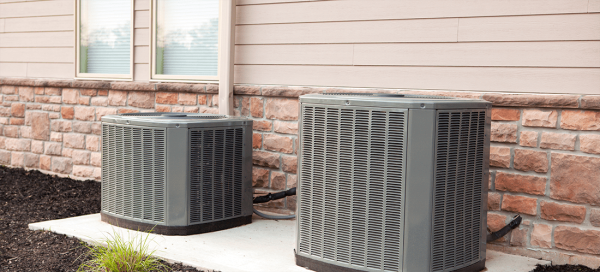In this blog post, we're putting Rhythm Energy's Time of Use (TOU) plan head-to-head with popular free night electricity plans. We'll break down the differences and help you decide which one best suits your budget and electricity needs.
Fixed Rate vs. Variable Rates vs. Time of Use (TOU) Rate
Before we dive into our Rhythm Energy Time of Use plan comparison, we’ll explain different electricity rates and their benefits to provide you with a big picture of what electricity companies in Texas can offer you.
Fixed Rate
The first on our list is a fixed electricity rate, often referred to as a fixed-rate plan. It's a pricing structure offered by electricity companies where consumers pay a consistent rate for their electricity usage, throughout the terms of their contract (usually six, 12, 24, or 36 months). The energy rate doesn’t change, which is why it has the oh-so-clever name of “fixed.” For many consumers, this is the most attractive rate, as it provides predictable electrical bills each month. On the other hand, the fixed rate can be high, depending on which electricity company you choose and how long you lock in the rate.
Variable Rates
The next component of our electricity plan options is the variable rate. As its name implies, a variable rate changes month-to-month and depends on many variables, like market prices or inflation. When these indices change, your electricity rate changes too. So, it can go up or down based on outside factors, or at the sole discretion of the electricity company, making your bill less predictable. There is an upside to these plans, though, especially for those who are only needing a few months of electricity at a time.
Time of Use or TOU Rate
Finally, as the title of this post points out, we’re talking about time-of-use plans. Let’s answer the question: What is a Time of Use rate? This pricing structure includes on-peak and off-peak hours, so the cost varies based on when you use the electricity. On-peak hours have the highest rates, while off-peak hours offer the lowest prices. While the benefits of TOU plans are numerous, the value of the incentive is dependent on you as a consumer. With Time of Use rates, control is in your hands, as you decide when to use electricity to save on costs during off-peak hours. The variation in the TOU pricing structure includes free nights and weekends when electricity companies don’t charge for energy consumption.
But, is this truly cost-free? We'll delve into the details and uncover the reality in further lines.
The Free Night Electricity Plan: Is It Truly Free?
You’ve heard it before: Nothing in life is free.
In the beginning, free electricity plans were nothing else but what we know as Time of Use plans in Texas. They had different energy prices for day and night, with the idea to encourage people to use less power during daytime when electricity is more expensive. It turned out that for consumers this pricing scheme can be confusing, so some electricity companies changed it and introduced pricing plans featuring free nights and weekends. This sounds simpler, right? But, what's the deal during the remaining hours of the day?
Today, many electricity companies in Texas offer $0.00 energy rates during the night, meaning that the electricity during this period is truly free. However, they offset this discount by charging much higher rates during the daytime trying to balance the costs. It was supposed to be a win-win for both consumers and retail electric providers, as it allows for cost savings while supporting grid stability. But in reality…
While some providers promote free nights and weekends, they often don't highlight the very high daytime rates they charge. For example, Just Nights Free Plan 12 includes a $0.00 rate during the night hours, but what happens then is that the daily energy rate is a whopping 26.2¢ per kilowatt hour!
Another thing you should know is that the night period doesn't mean the same for all companies. For example, the Just Nights Free Plan 12 starts at 9pm and ends at 7am, meaning that you'll get 70 off-peak hours per week. On the other hand, Rhythm's PowerShift 12 plan provides you with 140 off-peak hours per week. And we don’t ever offer anything free, because that wouldn’t be transparent. Before choosing free night plans, you should have all the information about how free night plans compare with the Rhythm Energy Time of Use plan, so you can make the best decision.
Comparing Plans: The Hidden Costs of Free Nights And Weekends
In order to see how free night plans compare to Rhythm Energy's TOU plan, we conducted a thorough analysis of their pricing structures and benefits. We carefully checked all pricing details, such as off-peak and on-peak hours, free weekends, and energy rates. We compared Rhythm Energy's Rhythm PowerShift 12, TXU Energy's Free Nights and Solar Days 12, Reliant Energy’s Truly Free Nights 100% Solar Plan 12 and Just Energy’s Nights Free Plan 12. All the companies offer packages for a 12-month period, which is also good to have in mind, especially if you're moving to Texas and looking for a new electricity provider.
All providers have a night period with off-peak hours, but the number of off-peak hours varies. For example, TXU's night hours start at 8pm and end at 5am and Reliant’s is 8pm to 6am, while Just's off-peak hours are between 9pm and 7am. What happens during these periods? The first two providers will not charge for the electricity usage during these night hours, meaning that you can get 70 free night hours per week with Just or Reliant’s plan or 63 free hours with the TXU free night plan.
On the other hand, Rhythm Energy’s Time of Use plan has way more off-peak hours (140), but they are not free. During these hours, Rhythm Energy charges 5.7¢ per kilowatt hour.
The next parameter we included is on-peak hours. When the free night period ends, both TXU and Just will start charging their daily energy usage rates. For example, TXU's peak energy rate, which is between 5am and 8pm, is 23.1¢, and, as mentioned, after ten free night hours, Just charges 26.2¢ and Reliant 28.6¢. When it comes to Rhythm Energy, the highest energy rate you'll pay for electricity is 17.6¢ between 6pm and 10pm, for only four hours vs 15 and 14, respectively with the other providers.
Finally, we calculated the average rate for the consumption of 2,000 kWh per month. The final data shows that Rhythm Energy's TOU plan is more affordable compared to Just's, Reliant’s and TXU's free night plans. With TXU, you will pay 16.1¢ per kilowatt hour and 18.9¢ with Reliant while with Just, the rate is 17.3¢. The average rate that Rhythm Energy charges is the most affordable that you can get and it is 12.9¢, that’s a savings of $64-$120 per month!
Bottom Line
Rhythm Energy's Time of Use plan emerges as a budget-friendly alternative. While it doesn't provide free night hours, the consistently lower rates prove to be more affordable than many other providers' plans that promote free nights.
By choosing Rhythm Energy's Time of Use plan, consumers can enjoy cost-effective electricity without the complex trade-offs of peak and off-peak pricing, making it a financially savvy choice for those seeking consistent savings on their energy bills.
Disclaimer: Due to the changes in the pricing on the electricity market in Texas, prices may vary. Call us at 1-888-7RHYTHM or visit Rhythm Energy website to check for the latest Time of Use rates.




